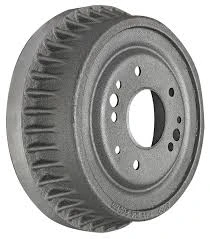
-
 Afrikaans
Afrikaans -
 Albanian
Albanian -
 Amharic
Amharic -
 Arabic
Arabic -
 Armenian
Armenian -
 Azerbaijani
Azerbaijani -
 Basque
Basque -
 Belarusian
Belarusian -
 Bengali
Bengali -
 Bosnian
Bosnian -
 Bulgarian
Bulgarian -
 Catalan
Catalan -
 Cebuano
Cebuano -
 Corsican
Corsican -
 Croatian
Croatian -
 Czech
Czech -
 Danish
Danish -
 Dutch
Dutch -
 Inglise
Inglise -
 Esperanto
Esperanto -
 Estonian
Estonian -
 Finnish
Finnish -
 French
French -
 Frisian
Frisian -
 Galician
Galician -
 Georgian
Georgian -
 German
German -
 Greek
Greek -
 Gujarati
Gujarati -
 Haitian Creole
Haitian Creole -
 hausa
hausa -
 hawaiian
hawaiian -
 Hebrew
Hebrew -
 Hindi
Hindi -
 Miao
Miao -
 Hungarian
Hungarian -
 Icelandic
Icelandic -
 igbo
igbo -
 Indonesian
Indonesian -
 irish
irish -
 Italian
Italian -
 Japanese
Japanese -
 Javanese
Javanese -
 Kannada
Kannada -
 kazakh
kazakh -
 Khmer
Khmer -
 Rwandese
Rwandese -
 Korean
Korean -
 Kurdish
Kurdish -
 Kyrgyz
Kyrgyz -
 Lao
Lao -
 Latin
Latin -
 Latvian
Latvian -
 Lithuanian
Lithuanian -
 Luxembourgish
Luxembourgish -
 Macedonian
Macedonian -
 Malgashi
Malgashi -
 Malay
Malay -
 Malayalam
Malayalam -
 Maltese
Maltese -
 Maori
Maori -
 Marathi
Marathi -
 Mongolian
Mongolian -
 Myanmar
Myanmar -
 Nepali
Nepali -
 Norwegian
Norwegian -
 Norwegian
Norwegian -
 Occitan
Occitan -
 Pashto
Pashto -
 Persian
Persian -
 Polish
Polish -
 Portuguese
Portuguese -
 Punjabi
Punjabi -
 Romanian
Romanian -
 Russian
Russian -
 Samoan
Samoan -
 Scottish Gaelic
Scottish Gaelic -
 Serbian
Serbian -
 Sesotho
Sesotho -
 Shona
Shona -
 Sindhi
Sindhi -
 Sinhala
Sinhala -
 Slovak
Slovak -
 Slovenian
Slovenian -
 Somali
Somali -
 Spanish
Spanish -
 Sundanese
Sundanese -
 Swahili
Swahili -
 Swedish
Swedish -
 Tagalog
Tagalog -
 Tajik
Tajik -
 Tamil
Tamil -
 Tatar
Tatar -
 Telugu
Telugu -
 Thai
Thai -
 Turkish
Turkish -
 Turkmen
Turkmen -
 Ukrainian
Ukrainian -
 Urdu
Urdu -
 Uighur
Uighur -
 Uzbek
Uzbek -
 Vietnamese
Vietnamese -
 Welsh
Welsh -
 Bantu
Bantu -
 Yiddish
Yiddish -
 Yoruba
Yoruba -
 Zulu
Zulu
main parts of a drum brake
Main Parts of a Drum Brake
Drum brakes are a common component in many vehicles, offering reliable stopping power. They work by using friction to slow down or stop the rotation of the wheels. Understanding the main parts of a drum brake is essential for both automotive enthusiasts and vehicle owners. This article will explore the primary elements of a drum brake system and their functions.
1. Brake Drum
The brake drum is a crucial component mounted on the wheel hub. Typically made of cast iron or aluminum, the drum rotates with the wheel. When the brake is applied, the friction material (brake shoes) presses against the interior surface of the drum, creating the necessary friction to slow down the vehicle. The design of the drum helps dissipate heat generated during braking, enhancing the overall performance and longevity of the braking system.
2. Brake Shoes
Brake shoes are the elements that press against the brake drum to create friction. They are curved metal pieces lined with friction material, often made of organic, semi-metallic, or ceramic compounds. When the brake pedal is engaged, hydraulic pressure pushes the brake shoes outward against the inside of the drum. High-quality brake shoes are essential for effective braking and should be inspected for wear or damage regularly.
The wheel cylinder is a hydraulic component located at each wheel of the drum brake system. It contains two pistons that operate on either side of the brake shoes. When the brake pedal is pressed, brake fluid is forced into the wheel cylinder, pushing the pistons outward. This movement activates the brake shoes, pressing them against the drum. The wheel cylinder's design ensures even distribution of force, maximizing the effectiveness of the braking system.
main parts of a drum brake

4. Return Spring
Return springs play a vital role in the drum brake system by ensuring that the brake shoes retract to their original position when the brakes are released. These springs are mounted on the brake shoes and are essential for preventing drag and ensuring proper shoe engagement. If the return springs are weak or damaged, the shoes may not retract fully, leading to increased wear and poor braking performance.
5. Adjuster Mechanism
The adjuster mechanism is responsible for maintaining the proper distance between the brake shoes and the drum. As the brake shoes wear down over time, the adjuster automatically compensates for this wear by adjusting the position of the shoes closer to the drum. This mechanism, often a simple ratchet or screw system, ensures that the drum brakes remain effective, reducing the need for frequent manual adjustments.
6. Backing Plate
The backing plate is a flat metal surface that supports the entire drum brake assembly. It serves as the foundation for the brake shoes, wheel cylinder, and other components. The backing plate also protects the brake system from dirt and debris while maintaining structural integrity. Proper installation and alignment of the backing plate are crucial for the optimal functioning of the drum brakes.
Conclusion
In summary, the main parts of a drum brake system—brake drum, brake shoes, wheel cylinder, return spring, adjuster mechanism, and backing plate—work together to provide effective stopping power. Regular maintenance and timely inspections of these components are essential for ensuring the safety and performance of a vehicle. Understanding these parts and their functions allows vehicle owners to make more informed decisions regarding maintenance and repairs, ultimately enhancing their driving experience. As technology continues to evolve, drum brakes remain a reliable choice for many vehicles, underscoring their importance in automotive engineering.
-
What Are Drum BrakesUudisedJul.07,2025
-
Understanding Brake Drum MaterialUudisedJul.07,2025
-
Semi-Trailer Brake Drum: A Key Component for Extreme Loads and Long-Distance TransportUudisedJul.07,2025
-
Drum Brake Pads for SaleUudisedJul.07,2025
-
Brake Drums for SaleUudisedJul.07,2025
-
Brake Drum ManufacturerUudisedJul.07,2025
-
Aluminum Brake Drums: The Future of High-Performance CarsUudisedJul.07,2025
